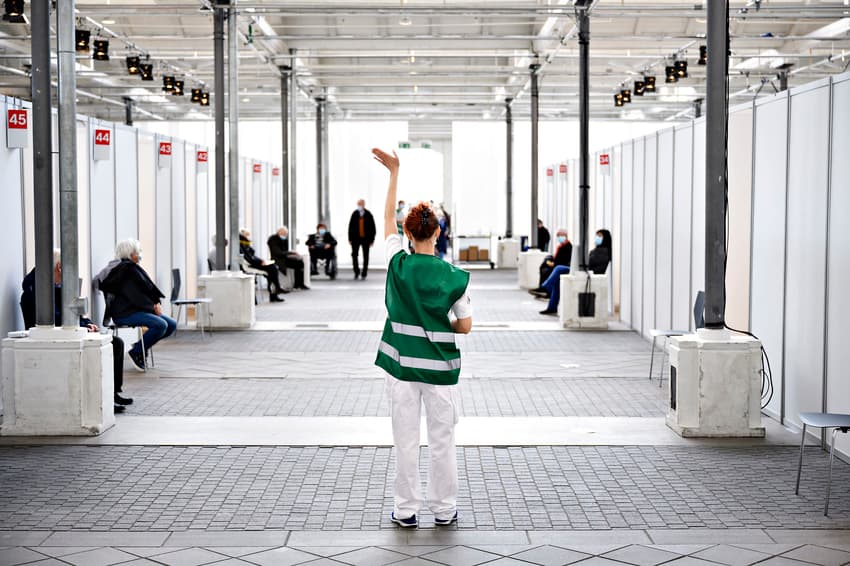Covid-19: Danish weekly infection total up by 50 percent

Covid-19 infections are now increasing in all parts of Denmark, with total weekly number of infections up by 53 percent.
The week commencing June 6th saw 5,830 new cases of Covid-19 registered by authorities, compared to 3,805 the preceding week. As such, the overall number of cases remains low.
The increase in case numbers is however accompanied by an increase in the test positivity rate – the percentage of tests that return a positive result – nationally, in all regions and all age groups.
The latest infection data comes from national disease control agency State Serum Institute (SSI).
The number of administered PCR tests also increased by 11 percent between the two weeks.
Denmark lifted the majority of its Covid-19 restrictions in February, with final travel restrictions ending in March.
Health authorities now only recommend taking a PCR test for Covid-19 if you have symptoms and are at risk of serious illness should you contract the virus.
Testing is no longer recommended for close contacts of people who have the virus or are suspected to have it.
“Prevalence of infections is increasingly strongly in all age groups,” the SSI report states.
The rising infection numbers are not a cause for immediate concern, according to Allan Randrup Thomsen, professor in experimental virology at the University of Copenhagen.
“Even though we’ve seen that the virus can spread, even in warm weather, it looks as though the increase is less than if it had occurred during the winter. There is probably a restricting effect because of the season,” Thomsen told news wire Ritzau.
A new subvariant of the Omicron Covid-19 variant, BA. 5, is expected to become the dominant form of the coronavirus this summer. The subvariant comprises a large number of new cases.
SSI has previously stated there are no indications that BA. 5 is more serious than the original Omicron variant.
The number of people admitted to hospitals in Denmark who have Covid-19 has also increased. A total of 220 inpatients with Covid last week represents a 23 percent increase. The patients are not necessarily being treated for the coronavirus and may have been admitted for other reasons.
The number of ICU patients with Covid-19 remains stable, as does the number of deaths registered of people with the virus.
Thomsen said he does not expected a large number of people to become seriously ill due to the climbing infection numbers.
“Even though the vaccines do not work effectively against becoming infected, they appear to still work against serious illness. I therefore see this as a wave, but not a marked, large outbreak that we will see during the summer,” he said.
Comments
See Also
The week commencing June 6th saw 5,830 new cases of Covid-19 registered by authorities, compared to 3,805 the preceding week. As such, the overall number of cases remains low.
The increase in case numbers is however accompanied by an increase in the test positivity rate – the percentage of tests that return a positive result – nationally, in all regions and all age groups.
The latest infection data comes from national disease control agency State Serum Institute (SSI).
The number of administered PCR tests also increased by 11 percent between the two weeks.
Denmark lifted the majority of its Covid-19 restrictions in February, with final travel restrictions ending in March.
Health authorities now only recommend taking a PCR test for Covid-19 if you have symptoms and are at risk of serious illness should you contract the virus.
Testing is no longer recommended for close contacts of people who have the virus or are suspected to have it.
“Prevalence of infections is increasingly strongly in all age groups,” the SSI report states.
The rising infection numbers are not a cause for immediate concern, according to Allan Randrup Thomsen, professor in experimental virology at the University of Copenhagen.
“Even though we’ve seen that the virus can spread, even in warm weather, it looks as though the increase is less than if it had occurred during the winter. There is probably a restricting effect because of the season,” Thomsen told news wire Ritzau.
A new subvariant of the Omicron Covid-19 variant, BA. 5, is expected to become the dominant form of the coronavirus this summer. The subvariant comprises a large number of new cases.
SSI has previously stated there are no indications that BA. 5 is more serious than the original Omicron variant.
The number of people admitted to hospitals in Denmark who have Covid-19 has also increased. A total of 220 inpatients with Covid last week represents a 23 percent increase. The patients are not necessarily being treated for the coronavirus and may have been admitted for other reasons.
The number of ICU patients with Covid-19 remains stable, as does the number of deaths registered of people with the virus.
Thomsen said he does not expected a large number of people to become seriously ill due to the climbing infection numbers.
“Even though the vaccines do not work effectively against becoming infected, they appear to still work against serious illness. I therefore see this as a wave, but not a marked, large outbreak that we will see during the summer,” he said.
Join the conversation in our comments section below. Share your own views and experience and if you have a question or suggestion for our journalists then email us at [email protected].
Please keep comments civil, constructive and on topic – and make sure to read our terms of use before getting involved.
Please log in here to leave a comment.